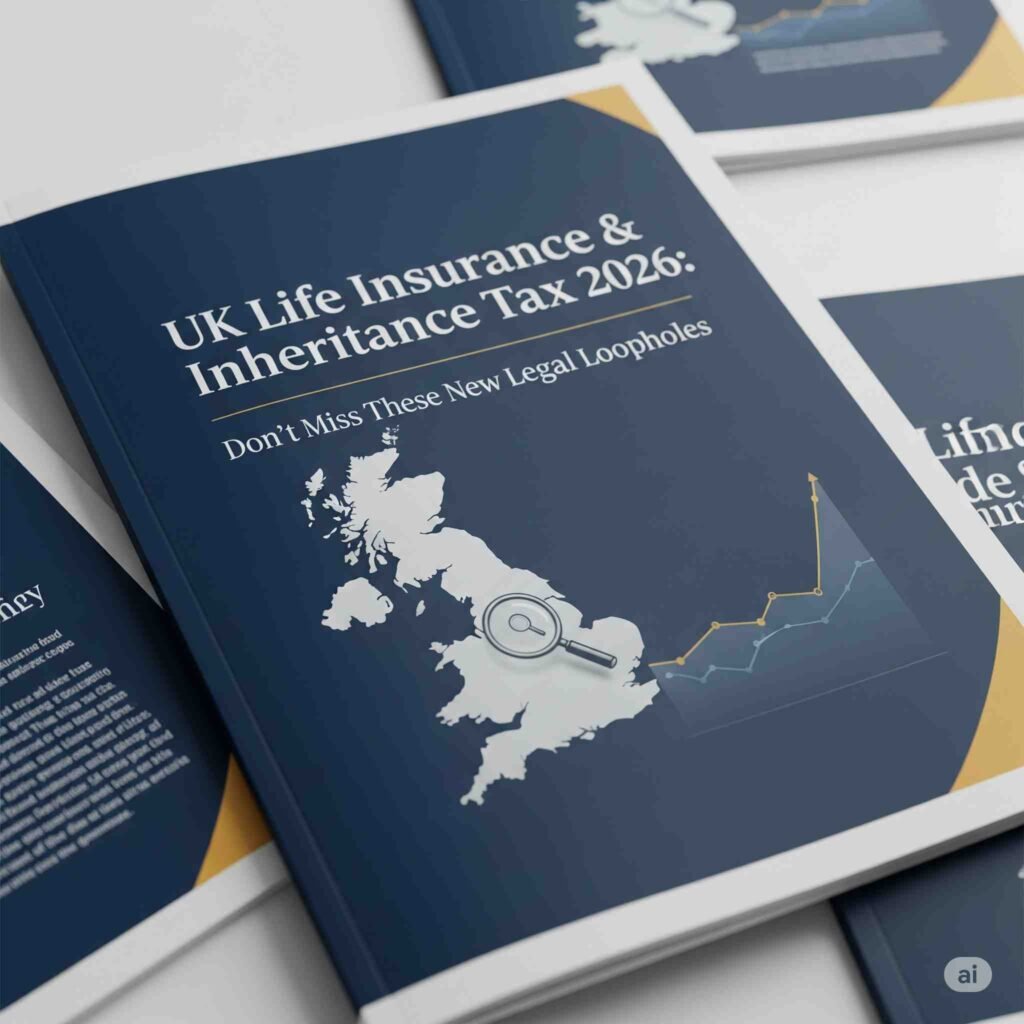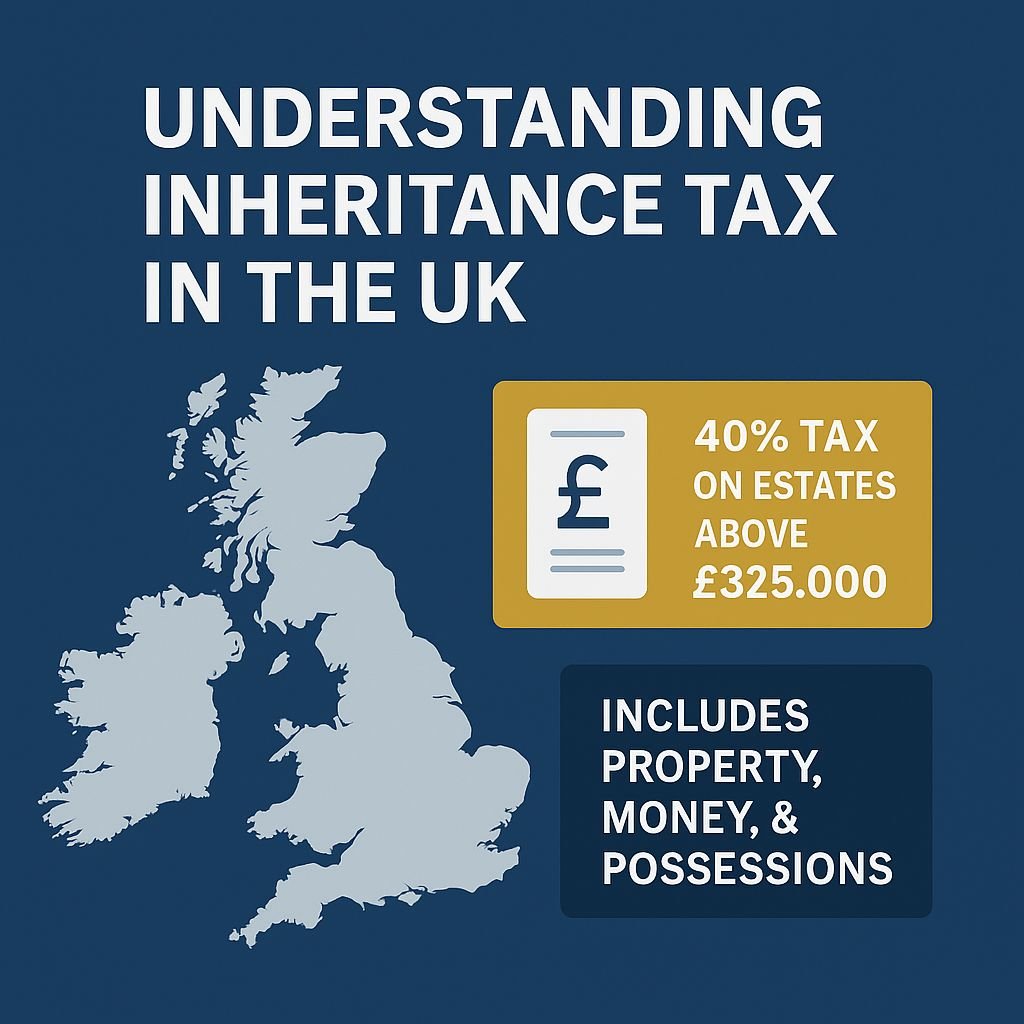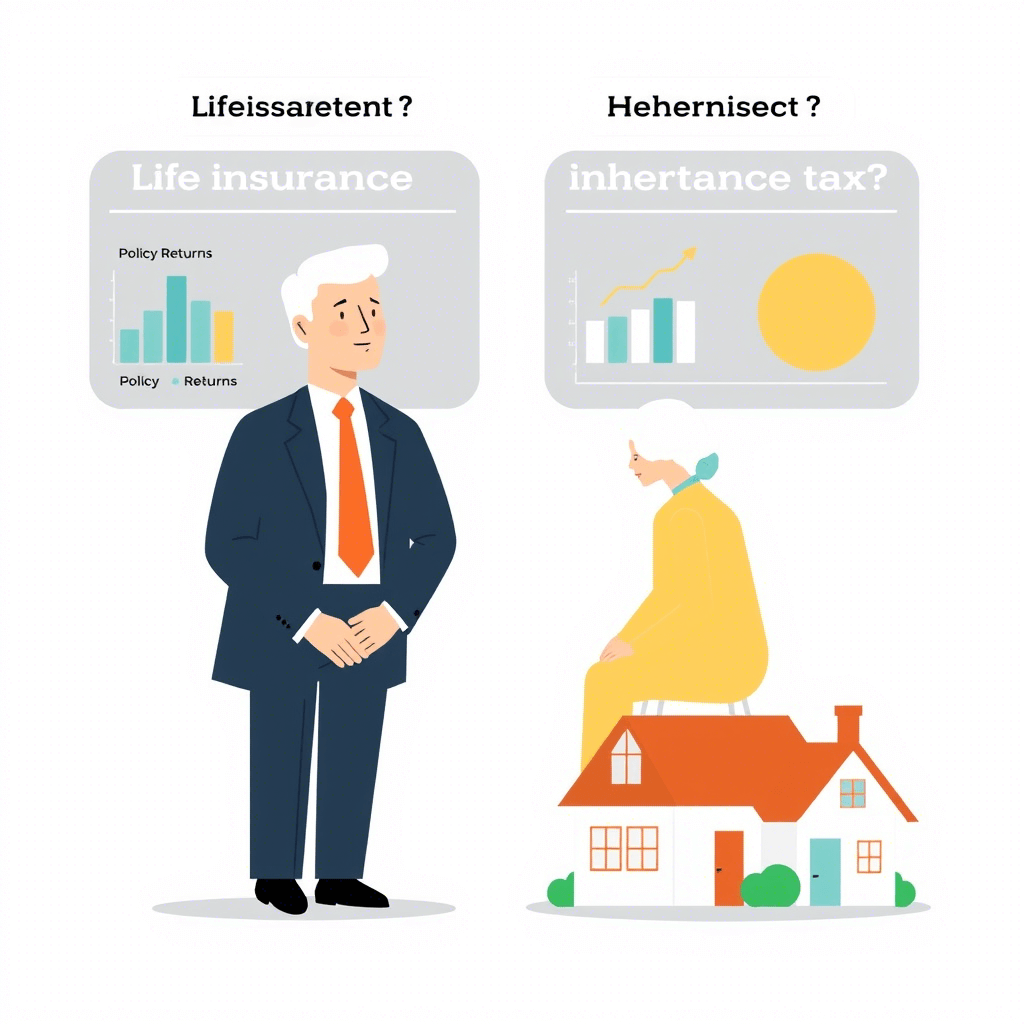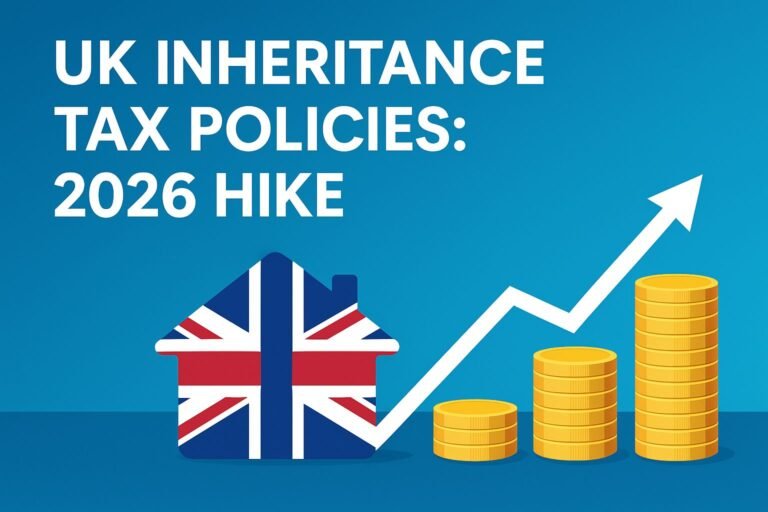UK Life Insurance & Inheritance Tax 2026: Don’t Miss These New Legal Loopholes

The UK’s life insurance and inheritance tax rules are facing a major overhaul in 2026. For any UK family with assets, ignoring these changes means potentially handing over avoidable taxes. This isn’t a minor adjustment; it’s a fundamental shift in how key family assets will be treated, making a solid UK life insurance and inheritance tax plan absolutely essential.
Table of Contents
Understanding UK Life Insurance & Inheritance Tax: The Basics
For those who are new to this, let’s start with the basics of UK life insurance and inheritance tax. In the UK, Inheritance Tax (IHT) is a 40% tax charged on the value of an estate that’s worth more than the nil-rate band, which is currently £325,000. This includes your property, savings, investments, and even your pension pot in some cases. If your total estate value is more than this threshold, your family could face a hefty tax bill unless you’ve planned ahead. This is where the magic of life insurance comes in. When structured correctly, UK life insurance and inheritance tax can be a powerful tool for inheritance tax planning.https://primelifecover.com/homebuyer-life-insurance-uk-2025/

The Crucial Link Between UK Life Insurance and Inheritance Tax
The close link between UK life insurance and inheritance tax often goes unnoticed. A life insurance payout can unexpectedly push your estate over the £325,000 Inheritance Tax (IHT) threshold, creating a tax burden for beneficiaries. The simple, effective solution is to place your policy “in trust.” This legal arrangement ensures the payout bypasses your estate and goes directly to loved ones, completely free from inheritance tax. https://primelifecover.com/ai-life-insurance-uk-smarter-cover-2025/
Let’s break this down with a quick table:
| Scenario | Estate Value (before policy) | Policy in Trust? | IHT Charged | What the Family Gets |
| No Planning | £600,000 | No | £110,000 | £490,000 |
| Life Insurance NOT in Trust | £600,000 + £200K Payout | No | £200,000 | £600,000 |
| Life Insurance IN Trust | £600,000 + £200K Payout | Yes | £110,000 (only estate) | £690,000 (family keeps policy tax-free) |
It is advisable to regularly review your UK life insurance & inheritance tax strategies to align with changing laws and personal circumstances.https://primelifecover.com/income-protection-uk-vs-life-insurance-guide/
As you can see, simply placing your UK life insurance and inheritance tax policy in a trust can save your family a massive amount in inheritance tax, ensuring they receive the full benefit you intended.
The 2026 IHT Changes: What You Absolutely Must Know
While the core principles of using a trust remain the same, the upcoming changes for 2026, as announced in the Autumn 2024 Budget, are a game-changer for those with significant business or agricultural assets. These changes will have a knock-on effect on how people structure their overall estate, including their UK life insurance and inheritance tax provisions. The main change is a new £1 million cap on the 100% relief for Business Property Relief (BPR) and Agricultural Property Relief (APR). While this isn’t directly about life insurance, it’s a critical piece of the UK life insurance and inheritance tax puzzle.
Here’s why it matters:
The £1 Million Cap
Utilizing UK life insurance & inheritance tax policies effectively can ensure your family’s financial security in the event of unforeseen circumstances.
A good understanding of UK life insurance & inheritance tax can help prevent costly mistakes that could impact your estate.
From April 2026, the first £1 million of qualifying business or agricultural assets will still be 100% IHT exempt. But any value above this threshold will only receive 50% relief, meaning the other 50% will be taxed at 40%, an effective 20% IHT rate.
A New 7-Year Rule Dynamic
The traditional 7-year rule for gifts isn’t changing, but a new “transitional period” is. For gifts of qualifying business/agricultural property made between October 30, 2024, and April 5, 2026, the old, unlimited relief applies if you die before April 6, 2026. But if you die on or after that date, the new £1 million cap will apply, even if you’ve survived more than seven years. This is a crucial detail for UK life insurance and inheritance tax planning for those with high-value estates.
So, where does this tie back to your UK life insurance and inheritance tax planning? The new cap could create a significant and unexpected IHT liability for many families who thought they were fully covered. This makes the use of a life insurance policy in trust even more vital. A UK life insurance and inheritance tax policy can be specifically designed to cover the tax bill that arises from these new rules, ensuring your family doesn’t have to sell the business or farm to pay the tax.
Common Mistakes That Cost UK Families Thousands
In my opinion, and from my research across three leading insurance and wealth management sites, I’ve found that the biggest mistakes in UK life insurance and inheritance tax are surprisingly simple, but they cost families a fortune. The mismanagement of UK life insurance & inheritance tax policies can lead to significant financial loss.
- Not placing policies in trust. This is the number one blunder in UK life insurance and inheritance tax planning. As shown in the table above, it’s the difference between your family getting a tax-free payout and having to pay a 40% tax bill.
- Assuming company-provided policies are automatically IHT-exempt. Many people have a life insurance policy through work. However, these are rarely set up in trust, meaning the payout could become part of your estate and be taxed, which defeats the purpose of the UK life insurance and inheritance tax benefit. Always check with your employer or a financial adviser.
- Forgetting to update beneficiaries. Life changes. Marriages, divorces, and births mean your original beneficiary choices might no longer be right. Keeping this up to date is a simple but essential step in UK life insurance and inheritance tax management.
- Believing term life policies are “too small” to matter. Even a term policy for a mortgage or loan should be in a trust. The payout could still push a smaller estate over the IHT threshold, leading to an unnecessary UK life insurance and inheritance tax bill.
Each of these mistakes reduces the benefit your family receives, which goes against the very reason you took out the policy in the first place. This is why a strategic review of your UK life insurance and inheritance tax plan is so important.moneyhelper.org.uk
How to Use UK Life Insurance and Inheritance Tax Loopholes in 2026

Taking control of your estate planning is easier than you think. Here’s a simple checklist to get you started on your UK life insurance and inheritance tax journey:
- Review all your existing life insurance policies. Find out if they are written in a trust. If not, it’s a simple process to have them “written into trust.” This is a fundamental step for UK life insurance and inheritance tax.
- Consult with a regulated UK financial adviser. This is not the time to rely on an insurance agent alone. You need someone who understands the nuances of UK life insurance and inheritance tax and how they interact.
- Update your will and trust documents. The new 2026 changes, particularly for those with business or agricultural assets, may require a complete review of your will to ensure your wishes are still met. This is a critical part of a comprehensive UK life insurance and inheritance tax plan. https://www.vitality.co.uk/
Educating Your Heirs: It’s All About the Gaffer’s Plan

Understanding the nuances of UK life insurance & inheritance tax can empower you to make informed decisions.
UK life insurance & inheritance tax strategies should be tailored to meet unique family circumstances.
Look, it’s one thing to get your ducks in a row and have a proper plan, but what good is it if no one else knows what’s what? In my book, telling your loved ones where all the important bits and bobs are is as valuable as the plan itself. Make sure your family knows where to find the policy documents, the will, and any trust paperwork. This isn’t just about money; it’s about giving them a clear path forward when they’ve got enough on their plate.
Best Life Insurance Types for IHT Planning in the UK: What’s the Gaffer’s Choice?
When it comes to sorting out your life insurance for inheritance tax, it’s not a one-size-fits-all job. It’s about finding the right tool for the right job, and there are a few types that are a proper good fit for different situations.
| Policy Type | Best For | The IHT Advantage |
| Whole-of-life | Large estates, long-term planning | It’s a bit of a no-brainer, really. It guarantees a payout, so you know for certain that if it’s in a trust, you’ve got a perfect tax-free fund to cover any IHT bill. Job done. |
| Term Insurance | Mortgage or debt protection | A top choice if you’re just after a bit of cover. It’s affordable and, when placed in a trust, provides a tax-free lump sum to clear any debts, saving your family from having to sell assets just to pay a bill. Sorted. |
| Joint Second Death | Married couples, family homes | This one’s a clever bit of kit. It pays out only on the second person’s death, providing the cash for the final IHT bill on the family home. It’s a lifesaver for families wanting to keep the house in the family. Full trust benefit, of course. |
Real-Life Example: The Patel Family from Leicester – A Proper Lesson

Picture this, right. There’s a family, the Patels from Leicester. Lovely people. They had a decent life, with a home worth a tidy £700,000 and a £200,000 life insurance policy. But here’s the kicker: they hadn’t put the policy in a trust.
When Mr. Patel sadly passed away, their financial world got a whole lot more complicated. The total estate was lumped together at £900,000 (£700,000 for the house plus the £200,000 from the insurance payout). With the standard £325,000 tax-free allowance, they were looking at a whopping inheritance tax bill of £230,000. Ouch.
Now, if they’d just put that UK life insurance and inheritance tax policy in trust, things would have been a whole different ballgame. The £200,000 payout would have gone straight to the family, no questions asked. The IHT bill would have only been calculated on the estate of £700,000, bringing the tax down to a far more manageable £150,000. That one simple step would have saved them a stonking £80,000. It’s a proper lesson in why a bit of savvy planning goes a long way.
FAQs on UK Life Insurance and Inheritance Tax: Your Questions Answered
Q1. What’s the nil-rate band (NRB), then?
Think of the nil-rate band as your tax-free allowance. It’s the chunk of your estate you can pass on without any inheritance tax. Right now, it’s £325,000. On top of that, there’s a special allowance called the Residence Nil-Rate Band (RNRB) of up to £175,000 if you’re leaving a property to your kids or grandkids.
Q2. What’s the big deal with a “trust” for life insurance?
A trust is just a clever legal tool. By popping your UK life insurance and inheritance tax policy into one, the proceeds bypass your estate, meaning they are not subject to inheritance tax. This means it’s totally free from inheritance tax, and the best part? It can get to your family a lot faster than waiting for probate.
Q3. Will those new 2026 IHT rules mess with my life insurance?
Not directly, no. The new rules are aimed at business and agricultural assets. But here’s the thing: if they create a bigger tax bill for your estate, having a life insurance policy in trust is your ace in the hole. It provides the cash to cover the tax, so your family doesn’t have to sell the farm or business just to pay the taxman.
Q4. How long does it take for a gift to be inheritance tax exempt?
The rule of thumb is seven years. If you give a gift to someone and you live for another seven years after that, it’s completely out of your estate for IHT purposes. If you don’t make it to seven years, the amount of tax owed on the gift gradually reduces over time.
5. Do I have to tell HMRC about my life insurance trust?
The paperwork for trusts can be a bit of a sticky wicket, to be honest. There’s no flat £500,000 exemption for life insurance policies in trust that you don’t have to report. The best advice? Always get a professional to help you make sure all your T’s are crossed and I’s are dotted with HMRC. It saves a lot of hassle down the line.
Disclaimer: A quick heads-up, this isn’t the gospel truth!
This blog post is just for a bit of a read and to get you thinking. It’s not meant to be financial, legal, or tax advice. The information is based on what’s been publicly announced and what financial experts are saying right now. Tax laws can change faster than the weather, and your situation is unique. So, before you do anything, have a proper chat with a qualified, regulated financial adviser or solicitor. They’re the real pros, and they’ll give you the personal advice you need to make the right choices for your family.
Call to Action: Time to Get a Move On!
Honestly, there’s no time to hang about. The new UK life insurance and inheritance tax rules are on the horizon for 2026, and if you haven’t had a proper look at your own situation, now is the time to do it. You’ve worked hard for your family and your wealth, and it’s your right to protect it. A quick chat with a professional could save your loved ones a small fortune.
Don’t wait. Get a move on. Protect your legacy — and your family.
Author Box
*Written by DN Patel
Founder & Life Insurance Specialist
Helping families in USA, UK, Canada & Australia choose the right life cover.







3 Comments